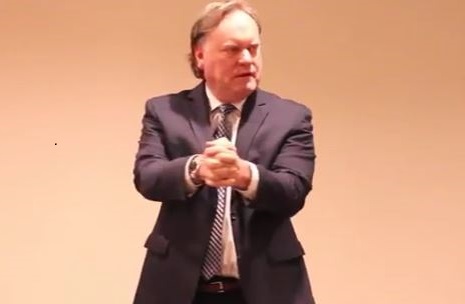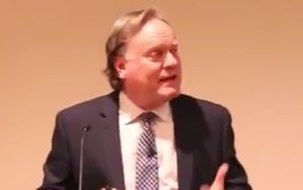Sims, B.A. & Firestien, R.L. (1979). Out of the classroom and through the woods. The Journal of Creative Behavior, 13 (2).*
Journal of Small Group Research
Firestien, R.L. (1990). Effects of creative problem solving training on communication behaviors in small groups. Small Group Research, 21, (4), 507-521.*
Creativity Research Journal
Firestien, R.L. & McCowan, R. (1988). Creative problem solving and communication behavior in small groups. Creativity Research Journal, 1 (1), 106-114.*
Journal of Creativity and Innovation Management
Puccio, G.J., Firestien, R.L., Coyle, C. & Masucci, C. (2006). A review of the effectiveness of CPS training: A focus on workplace issues. Creativity and Innovation Management, 15 (1), 16-30.*
National Productivity Review
Firestien, R.L. & Kumiega, K. J. (1994) Using a formula for creativity to yield organizational quality improvement. National Productivity Review, Autumn, 569-595.
The Journal of the University of Sciences
Firestien, R.L. & Treffinger, D.J. (1989). Guidelines for effective facilitation of creative problem solving. JANUS: A Janus Pannonius Todomanyegytem folyoirata (The Journal of the University of Sciences: Pecs, Hungary), 75-92.*
My Publications in Conference Proceedings
Isaksen, S.G., Dorval, K.B., Noller, R.B. & Firestien, R.L. (1993). The dynamic nature of creative problem solving. In Proceedings of the 1992 Creativity and Innovation Networking Conference. Greensboro, NC: Center for Creative Leadership.
Firestien, R.L. & McCowan, R.J. (1992). Effects of creative problem solving training on quality of ideas generated in small groups: A working paper. In Novelli, L. (Ed.) Collected Research Papers of the 1992 Creativity and Innovation Networking Conference Greensboro, NC: Center for Creative Leadership.
Firestien, R.L. (1991). Strategies for nourishing creativity. In Rickards, T., Colemont, P., Groholt, P., Parker, M., Smeekes, H. (Eds.), Creativity and Innovation: Learning from Practice (pp. 115-120). Drachten, The Netherlands: Necum Publishers.
Firestien, R.L. (1989). Releasing creativity in the work force. In Proceedings of the national communications forum. (pp.1203-1210). Chicago, IL: National Engineering Consortium and Professional Education International, Inc.
Firestien, R.L. & Treffinger, D.J. (1989). Guidelines for effective facilitation of creative problem solving. G/C/T Magazine, July/August 1989, 35-39; September/October 1989, 44-47; November/December 1989, 40-44*
Firestien, R.L. (1988). Effects of creative problem solving training on communication behaviors in small groups. In Colemont, P., Groholt, P., Rickards, T., Smeekes, H. (Eds.), Creativity and innovation: Towards a European network (pp. 251-256). Dordrecht, The Netherlands: Kluwer Academic Publishers.
Roger Firestien along with Mary C. Murdock, Scott G. Isaksen and Donald J. Treffinger edited the books: Nurturing and Developing Creativity: The Emergence of a Discipline, and Understanding and Recognizing Creativity: The Emergence of a Discipline.
In addition to writing books and articles for publication in professional journals, I have produced a variety of video programs. They are listed below.
Firestien, R.L. (1994). Unleashing the Power of Creativity: The key to teamwork, empowerment, and continuous improvement. [Video program] Buffalo, NY: Kinetic Films, Inc.
Applying Creativity: The Ladder of Abstraction: Asking Questions to Find the Real Problem. [Video program] Buffalo, NY: SUNY-Buffalo State
Applying Creativity: Creative Problem Solving and Roles in Creative Problem Solving. [Video program] Buffalo, NY: SUNY-Buffalo State
Applying Creativity: Excursions as a Creativity Technique. Video program] Buffalo, NY: SUNY-Buffalo State
Applying Creativity: To Generate Good Ideas, Generate Lots of Ideas. Video program] Buffalo, NY: SUNY-Buffalo State
Applying Creativity: Card Sort: How to Rank Options. [Video program] Buffalo, NY: SUNY-Buffalo State
Applying Creativity: Evaluation Matrix. [Video program] Buffalo, NY: SUNY-Buffalo State
Applying Creativity: The Power of the PPC (Pluses, Potentials and Concerns). [Video program] Buffalo, NY: SUNY-Buffalo State
Applying Creativity: Highlighting: or How to Sort Out Ideas. [Video program] Buffalo, NY: SUNY-Buffalo State
Applying Creativity: Clarifying Problems So That They Can Be Solved: [Video program] Buffalo, NY: SUNY-Buffalo State

